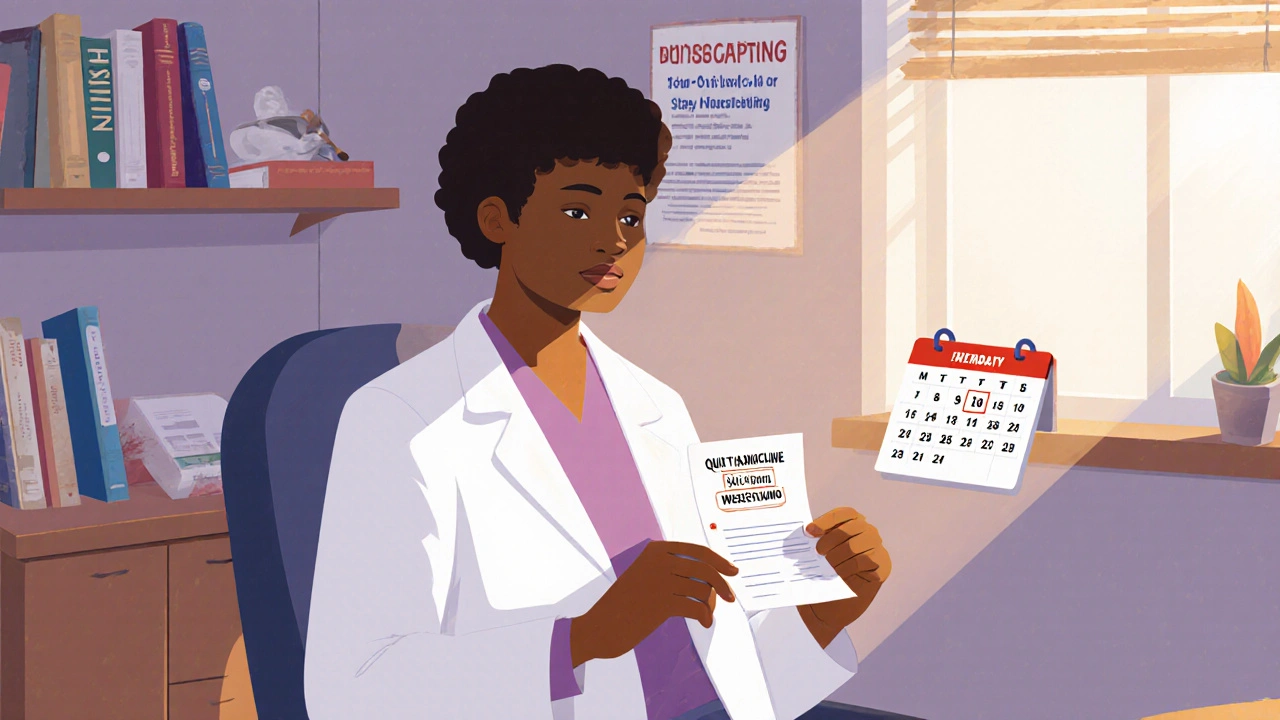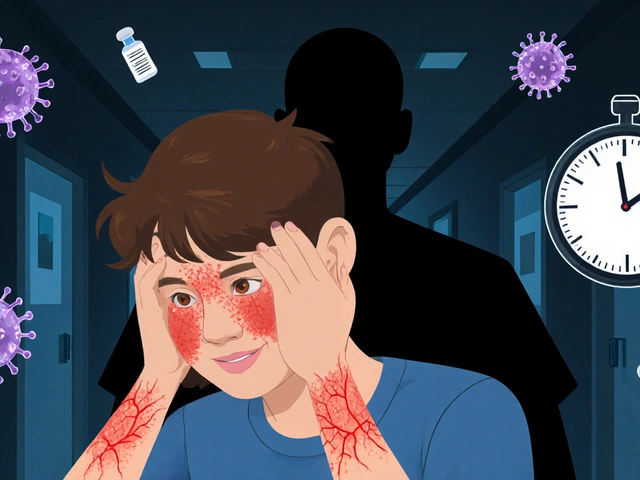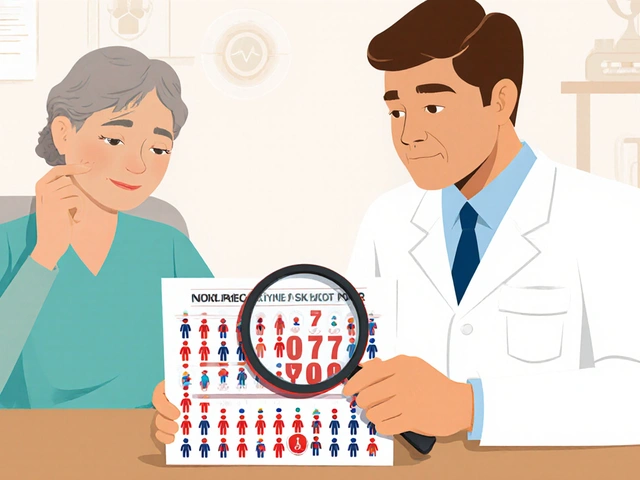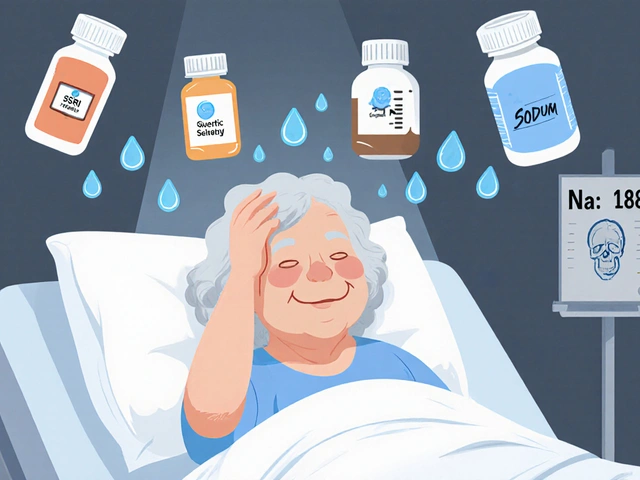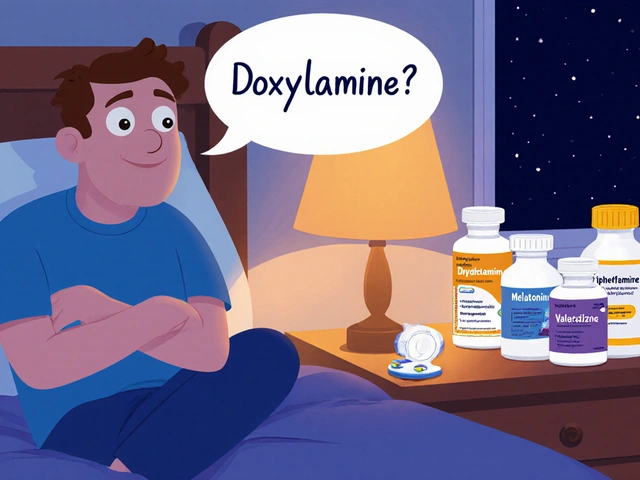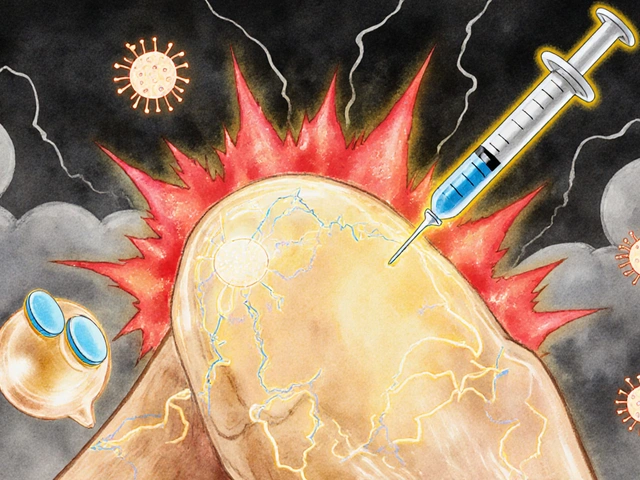Quitting smoking is one of the best things you can do for your health. But if you’ve tried willpower, nicotine patches, or gum and still can’t quit, varenicline might be the next step. It’s not an over-the-counter drug. You can’t just walk into a pharmacy and buy it. You need a prescription. And getting one isn’t as complicated as it sounds-if you know what to expect.
What Is Varenicline?
Varenicline is the generic name for the brand-name drugs Champix and Chantix. It’s a prescription medication approved by the FDA and Health Canada to help adults stop smoking. Unlike nicotine replacement therapies (like patches or lozenges), varenicline works directly on your brain’s nicotine receptors.
It does two things: it reduces cravings for nicotine, and it blocks the pleasurable effects of smoking if you do light up. That means even if you slip up, the cigarette won’t feel as satisfying. Studies show people using varenicline are more than twice as likely to quit after 12 weeks compared to those using a placebo. After a year, about 22% of users stay smoke-free-much higher than with nicotine gum or patches alone.
Who Can Get a Varenicline Prescription?
You don’t need to be a heavy smoker to qualify. But you do need to meet a few basic criteria:
- You’re at least 18 years old (in the U.S. and Canada)
- You’re committed to quitting smoking completely
- You don’t have a history of severe mental health conditions like uncontrolled depression, bipolar disorder, or suicidal thoughts
- You’re not pregnant or breastfeeding (unless your doctor says it’s safe)
- You don’t have a known allergy to varenicline
If you’ve had heart disease, kidney problems, or seizures, your doctor will need to evaluate whether varenicline is safe for you. It’s not for everyone-but it’s a realistic option for most adults trying to quit.
How to Get a Prescription: Step-by-Step
Getting varenicline isn’t like ordering coffee online. There are steps you need to follow. Here’s how it works:
- Make a decision to quit. You can’t get varenicline unless you’re ready to stop smoking. Your doctor will ask you when you plan to quit. Most people pick a quit date within the next two weeks.
- See your doctor or visit a smoking cessation clinic. Start with your primary care provider. If your clinic has a smoking cessation program, go there-they specialize in this. Some pharmacies also offer free consultations with a pharmacist who can refer you.
- Be honest about your smoking habits. Tell your doctor how many cigarettes you smoke per day, how long you’ve smoked, and what’s worked (or didn’t work) before. This helps them decide if varenicline is right for you.
- Discuss side effects and risks. Varenicline can cause nausea, trouble sleeping, vivid dreams, or headaches. In rare cases, it’s been linked to mood changes or depression. Your doctor will ask about your mental health history. If you’ve ever felt hopeless or had suicidal thoughts, they’ll need to monitor you closely.
- Get the prescription. If you’re cleared, your doctor will write a prescription for varenicline. The typical starting dose is 0.5 mg once daily for the first three days, then 0.5 mg twice daily for four days, then 1 mg twice daily. The full course lasts 12 weeks. Some people extend it to 24 weeks if they’re doing well.
- Fill your prescription. Take the prescription to any licensed pharmacy. Most insurance plans cover varenicline, but you might have a copay. If you’re uninsured, ask about patient assistance programs. Pfizer offers discounts for Chantix if you qualify.

What to Expect When You Start Taking It
Don’t expect magic on day one. Varenicline takes time to build up in your system. Most people start feeling fewer cravings after about a week.
Here’s what your first few weeks might look like:
- Week 1-2: You’ll start taking the medication. Nausea is common. Take it with food and a full glass of water to reduce it.
- Week 3: Your quit date. You stop smoking completely. Cravings may still hit, but they’ll be weaker than before.
- Week 4-8: Your body adjusts. Sleep might be restless. Vivid dreams are normal. If they’re disturbing, talk to your doctor-dosing can be adjusted.
- Week 9-12: You’re past the worst. Most people report feeling more in control. If you’ve stayed smoke-free, you’re on track.
If you still want to smoke after 12 weeks, your doctor might recommend continuing for another 12 weeks. The longer you stay on it, the higher your chance of staying quit for good.
What If Varenicline Doesn’t Work for You?
It’s not a guarantee. About 1 in 5 people don’t respond well. That doesn’t mean you’re weak or failed. It just means this medication isn’t the right tool for your brain chemistry.
If varenicline doesn’t help:
- Try bupropion (Zyban), another prescription medication that reduces cravings.
- Combine a nicotine patch with a short-acting form like gum or lozenges.
- Use behavioral support-phone coaching, apps like QuitGuide, or in-person counseling.
- Try a different quit date with a new plan. Many people need multiple attempts before they succeed.
There’s no shame in switching methods. Quitting smoking is hard. The goal isn’t to get it right on the first try-it’s to keep trying until you do.

Where to Find Support
Medication helps, but support makes the difference. Most people who quit with counseling and medication are more than three times as likely to succeed than those who go it alone.
Here are free or low-cost options:
- 1-800-QUIT-NOW (U.S.): Free phone coaching, text support, and referrals to local programs.
- Smokefree.gov: Daily tips, quit plans, and a text messaging program.
- Quitline services: Available in every U.S. state and Canadian province. Call or visit your local health department website.
- Apps: Smoke Free, Quit Genius, and MyQuit Coach use behavioral science to keep you on track.
Don’t underestimate the power of talking to someone who’s been there. Peer support works.
Common Misconceptions
There’s a lot of misinformation about varenicline. Let’s clear up the biggest myths:
- Myth: It’s addictive. Fact: Varenicline isn’t addictive. It doesn’t produce a high or euphoria. You don’t develop tolerance.
- Myth: It causes depression. Fact: The risk is low and mostly affects people with a prior history. Most users report no mood changes.
- Myth: You have to quit cold turkey on day one. Fact: You can start varenicline up to a week before your quit date. Some people even cut down gradually while taking it.
- Myth: It’s only for heavy smokers. Fact: Even people who smoke 5 cigarettes a day benefit. The medication works the same way regardless of how much you smoke.
Final Thoughts
Getting a varenicline prescription is the first real step toward quitting smoking for good. It’s not a miracle drug. It requires commitment. But if you’re ready to stop, it’s one of the most effective tools you have.
Start by talking to your doctor. Be honest. Ask questions. Don’t be afraid to try. Millions of people have done it before you. You can too.
Can I get varenicline without seeing a doctor?
No. Varenicline is a prescription-only medication in the U.S., Canada, and most other countries. You cannot buy it over the counter or online without a valid prescription from a licensed healthcare provider. Be cautious of websites selling it without a prescription-they may be selling counterfeit or unsafe products.
How long does it take for varenicline to start working?
Most people notice a reduction in cravings after about 7 to 10 days of consistent use. It takes time for the drug to build up in your system. Don’t expect immediate results. Stick with it for at least two weeks before deciding if it’s working for you.
Is varenicline safe if I have high blood pressure?
Yes, varenicline is generally safe for people with high blood pressure. In fact, quitting smoking often improves blood pressure and heart health. But your doctor will check your medical history before prescribing it. If you have uncontrolled heart disease or recent heart attacks, they may recommend other options.
Can I drink alcohol while taking varenicline?
Some people report increased intoxication or changes in behavior when drinking alcohol while on varenicline. It’s not dangerous for most, but it’s best to limit alcohol during the first few weeks. If you notice unusual behavior, dizziness, or aggression after drinking, stop alcohol and talk to your doctor.
What happens if I miss a dose?
If you miss a dose, take it as soon as you remember-unless it’s almost time for your next dose. Don’t double up. Missing one dose won’t ruin your progress, but try to take it at the same time every day to keep steady levels in your body.
Will I gain weight after quitting with varenicline?
Some people gain a few pounds after quitting smoking, regardless of the method. Varenicline actually helps reduce weight gain compared to quitting without medication. On average, users gain about 5 pounds-less than those using nicotine replacement. Eating healthy and staying active can help manage this.
